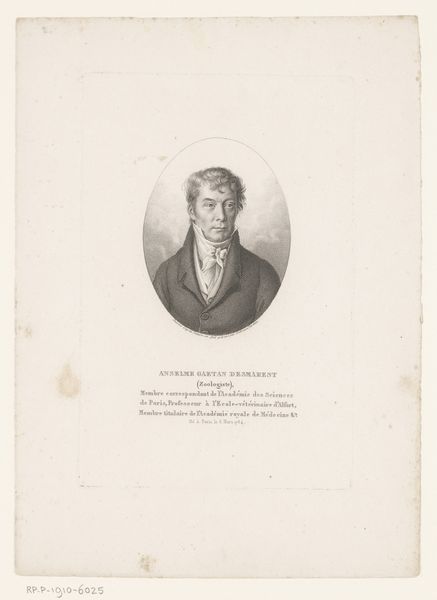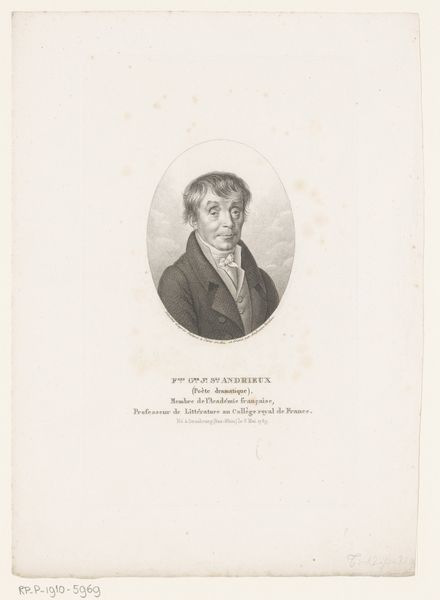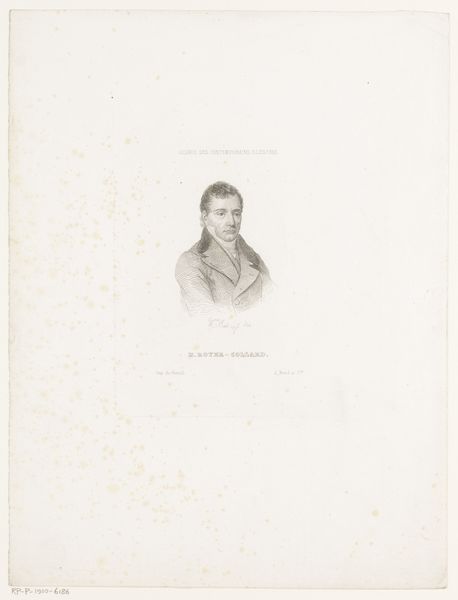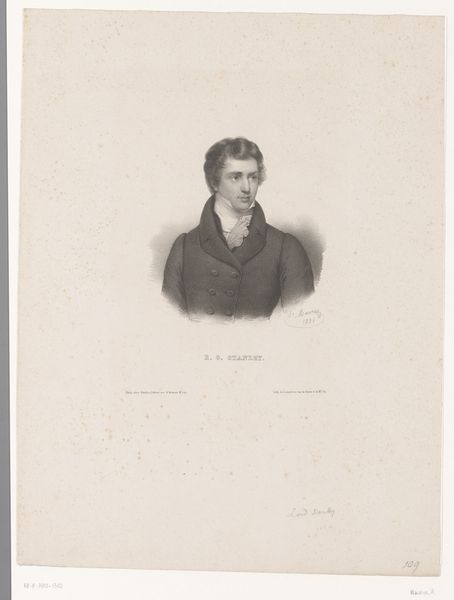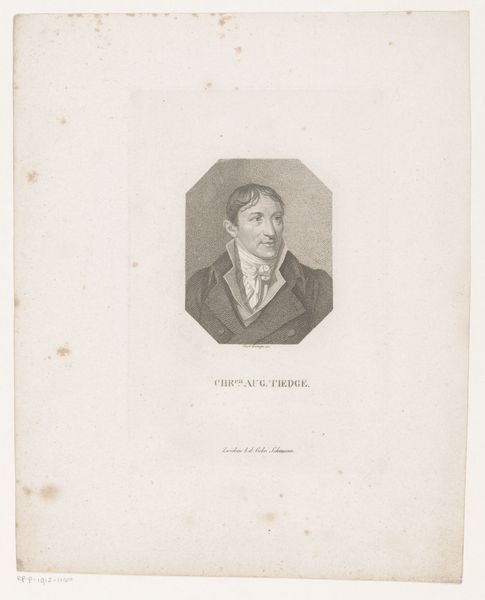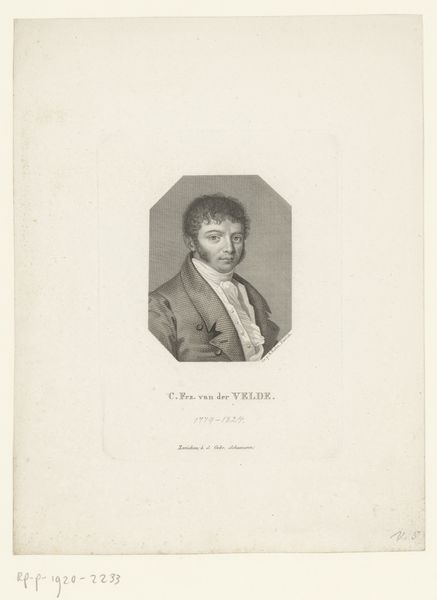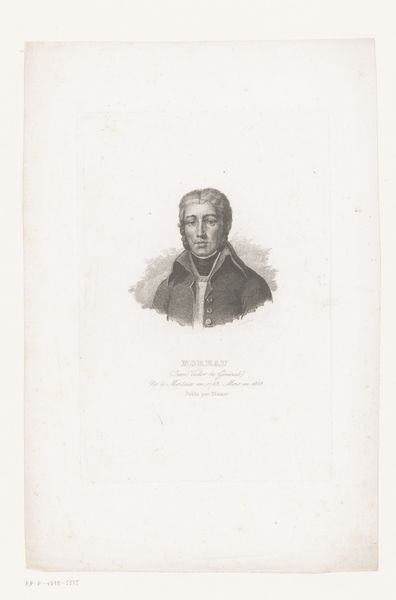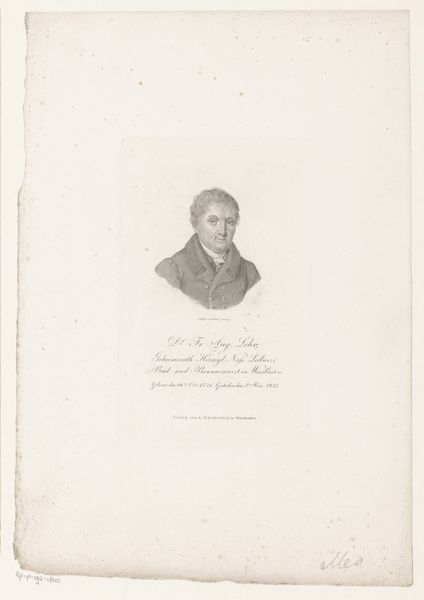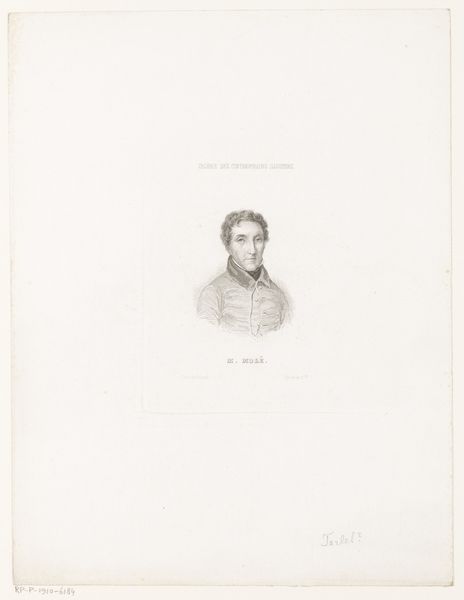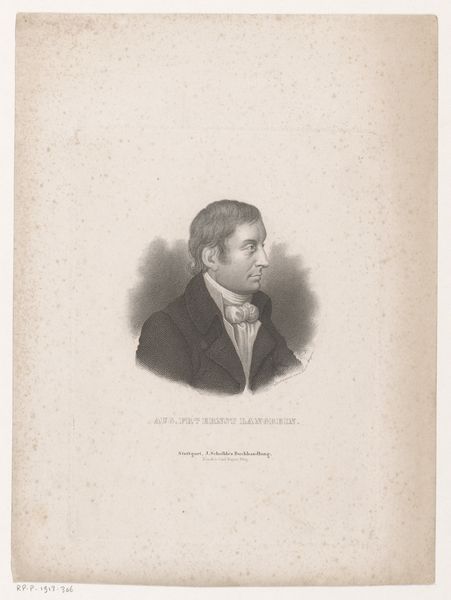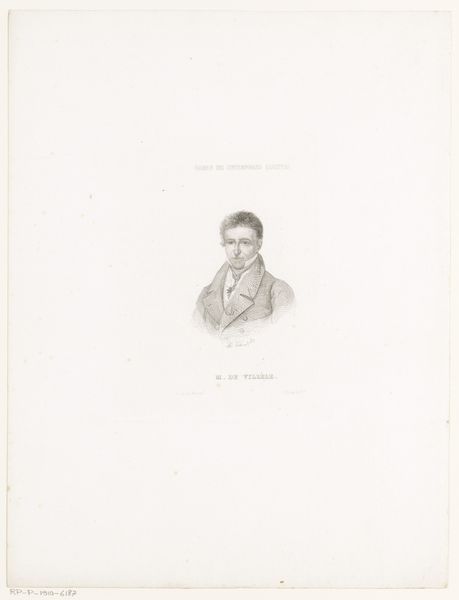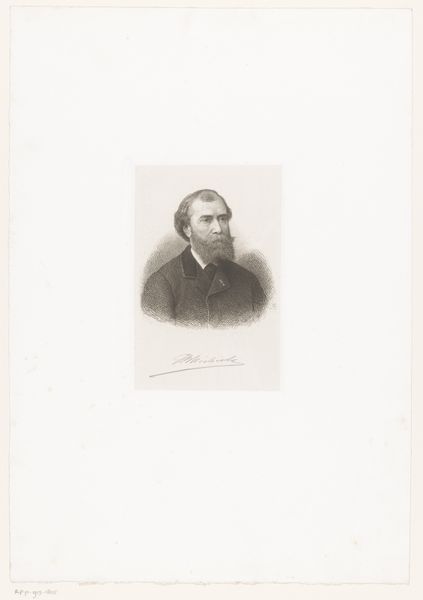
Dimensions: height 151 mm, width 107 mm
Copyright: Rijks Museum: Open Domain
This portrait of Pierre Joseph Redouté was made by Adolphe Varin, using the technique of lithography. It’s a fascinating process, which relies on the simple principle that oil and water don’t mix. The image you see began as a drawing made with a greasy crayon on a flat slab of limestone. The stone was then treated with acid, and inked. The ink only adhered to the areas drawn with the crayon. This allowed Varin to print multiple copies of the image onto paper. Lithography democratized image-making. Suddenly, you didn’t need to be a master engraver to produce detailed pictures. This had huge implications for commerce, journalism, and, of course, art. The texture of the stone, the pressure of the printing press, and the careful hand of the lithographer, all contributed to the final product. It is a reminder that even in seemingly straightforward reproductions, the hand of the maker, and the properties of the materials, are always present. We understand the portrait of Redouté better by understanding the process by which it came into being, blurring any perceived lines between artistic creation and commercial replication.
Comments
No comments
Be the first to comment and join the conversation on the ultimate creative platform.
